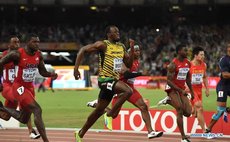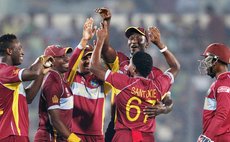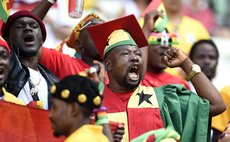The margin of difference
The just concluded Tri-Nations ODI Series between West Indies, Australia and South Africa was essentially, in my view, a proving ground to see how much our players have absorbed by way of elevating their ability to compete at the highest level. Let's forget our winning of the T20 World Cup over in India. That represents the most condensed format of the game – a short sprint, more considered an appetizer rather than the main course in the cricketing banquet. To be big in international cricket means finding the ability to be fully expressive at all three formats, the longer ones being equated with the more lucrative features in eyes of the major sponsors. Test matches are rated as the truly highest essence fully compatible with the illustrious records and undoubted international pedigree. T20 is ranked as flash. Tests rate as substance, and ODI's place somewhat in between.
Up to the "semi-final" with South Africa everyone was looking upon West Indies as having redeemed themselves somewhat for their multitude of failures and inconsistencies over the last several years. After all, Australia rank as number one and South Africa number three in one day cricket. They are nothing less than formidable. Let's take a sample scoreline of some days before the final. Australia sent in to bat scored 265 for 7 in their 50 overs boosted by Usman Khwaja 98 and George Bailey 55. The West Indies reply was 266 for 6, with Johnson Charles 48, Darren Bravo 39, Samuels 92, and Ramdin 29 as dominant contributors. West Indies won by 4 wickets. However, the nagging question remained. Would there be sufficient character and steely metal in the makeup to pose as sufficient to contend with Australia when it would expectedly raise its game for the real big occasion?
Answers came fast and furious on Sunday 27th June in Barbados on a pitch showing itself to be good for the game – a little help for the bowlers, but providing due encouragement for the truly high quality batsmen of exceptional focus. Australia won the toss and batted, seeking to get adequate amount of runs on the board, from which position a launching pad to success might be obtained. West Indies did very well in holding Australia to 173 for 6 in 37 overs – among the victims: Finch 47, Smith 46 and Marsh 32, falling to the joint bowling efforts of Pollard and Shannon Gabriel.
That then ushered the really critical phase of the match. Would West Indies remain resolute, or would they allow Australia to squirm free from their vise-grip? It has often been said a quality team, providing it has wickets in hand, can double its score after the 35th over! West Indies needed to avoid faltering. But this they were unable to manage. In their remaining 13 overs Australia raised their score by 97 runs to 270 for 9 at the close of their 50 overs. My perspective was to the effect we had allowed a heavy bonus of around 40 runs to Australia.
Admittedly, Matthew Wade, the same man who had lifted Australia to win in a Test match at Windsor Park, Roseau, was still there. He scored 51 not out, but West Indies dropped in their core resistance at the crucial period.
Significant requirement by West Indies in going after the target of 271 was the use of a very sensible approach, both in technique and tactics. Fearfully, our batsmen proved lacking on both fronts. Andre Fletcher never caught on to the idea he could be a major contributor by adopting the role of giving the strike to Johnson Charles. He kept struggling with himself to no avail. And just as I was advancing the notion that Charles needed to bat almost right through the innings, he fell for 45, leaving everything in disarray – Samuels and Bravo having never begun to get into decent stride.
Afterwards, it was only bits and pieces, not guided by a coherent plan. Ramdin's 40 and Narine's 23 could have been of greater use if Pollard had managed a restraint demanded by the situation. A required run rate of 5.4 runs per over was not initially an insurmountable challenge. What was big for West Indies was the matter of an ability to summon the needed discipline. I hasten to say the technical specificity of applied batsmanship was horribly lacking.
West Indies tried to bat from a rooted position of their feet! Standing to deliver may look good. Yet, it seldom does well for you in crucial situations. There were too many dismissals on the West Indies scorecard attributable to ugly hitting across the line, and at a time when such procedure was clearly outside the sensible prescription.
There are other things, too, which may well have intruded into the West Indies psyche posing a strong detriment to our cause. When we obtained the win over South Africa on the Friday of the weekend, only two days before the final match, I had some degree of trepidation. A commentator actually alluded that West Indies would celebrate monstrously on the same Friday night. I am afraid they may have overextended this to Saturday as well, leading to a monstrous hangover!
When another Australian commentator was asked post match by Ian Bishop about the areas in which West Indies might best proceed in the task of consolidating progress in their game, he said they should take little stages of improvement and progressively build upon them. This is an obvious recommendation. What, though, is of grim concern is our failure to lift ourselves in fifteen or more years to a standard of performance our players once took for granted and which was commonplace in the region. Just around the corner is a tour to the Caribbean by India starting with Test match engagements in July. Our well worked drawing board will be commandeered into more extensive use. Incidentally, I heard an Australian commentator on behalf of the West Indies Board engaged in thanking the sponsors of the Tri-Nations series at the closing ceremony. That sounded odd – at least to my ears!




